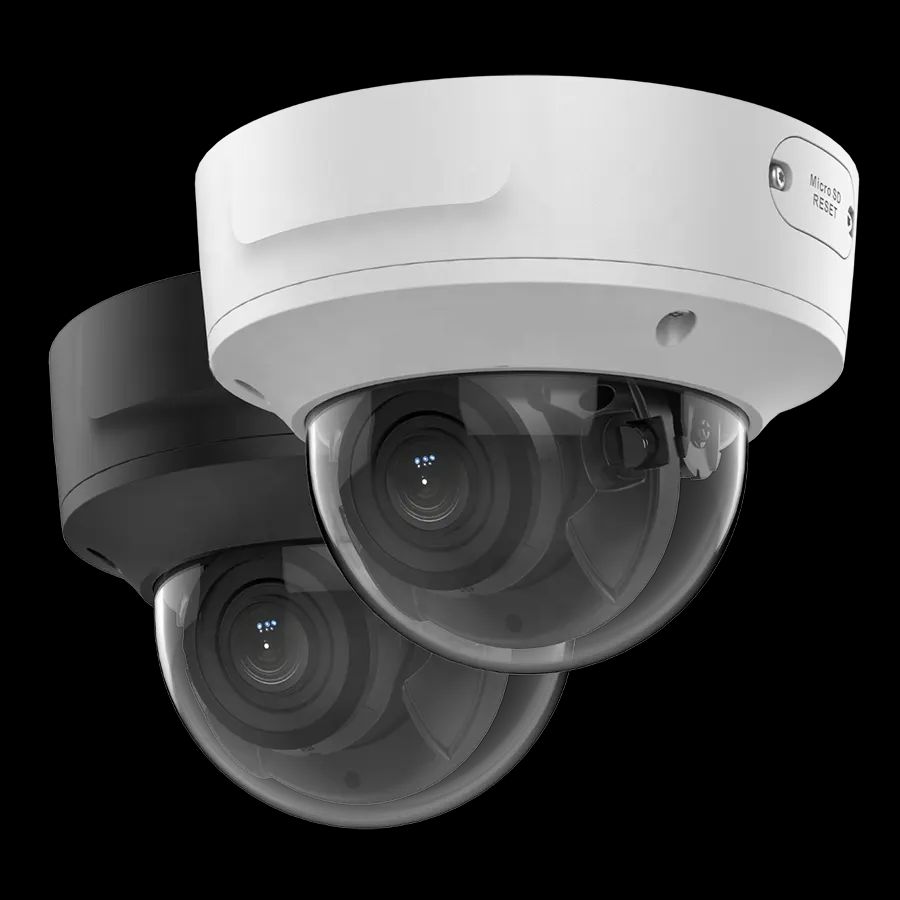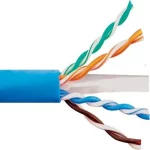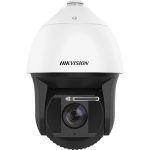Fixed vs Varifocal Lens Security Cameras: What Sets Them Apart?
Understanding Fixed Lens Security Cameras
Fixed lens security cameras, as the name implies, are designed with a lens that has a fixed focal length. This means that the field of view (FoV) is constant and cannot be adjusted. They are also known as monofocal cameras. Fixed lens cameras offer a simple, reliable, and cost-effective solution for static surveillance needs. They are particularly well-suited to situations where the area of interest is well-defined and consistent.
The fixed lens denotes a pre-set aperture and focus, which means that once the camera is installed, the FoV remains static. The angle of coverage is determined by the focal length of the lens. A smaller focal length (e.g., 2.8mm) results in a wider FoV, while a larger focal length (e.g., 12mm) narrows down the FoV.
These cameras are commonly used in environments where consistent coverage of a particular area is required. They are ideal for scenarios where the scene to be monitored doesn’t change, and detailed zoom is not necessary. For instance, a fixed lens camera may be used to cover a small room, an entrance, or an exit point.
Key Advantages of Fixed Lens Security Cameras:
- Simplicity: Because they have fewer moving parts, fixed lens cameras are generally simpler and more reliable. Once installed and aimed, they require minimal maintenance.
- Cost-effectiveness: These cameras are typically more affordable than varifocal lens cameras, making them an economical choice for many surveillance applications.
- Compact Size: Fixed lens cameras are often smaller and more discreet than their varifocal counterparts, making them a great choice for covert surveillance or where aesthetic is a concern.
- Low-Light Performance: With their fixed aperture, these cameras can often perform better in low-light conditions compared to varifocal cameras with similar specs.
On the downside, the lack of flexibility in adjusting the FoV can be a limiting factor with fixed lens cameras. They can’t adapt to changing surveillance needs, such as the need to zoom into a specific area for more detail or to broaden the view to cover a larger area. Consequently, the positioning and selection of the camera must be carefully considered during the initial installation.
Understanding Varifocal Lens Security Cameras
Varifocal lens security cameras provide a higher level of versatility compared to fixed lens cameras. As the name suggests, varifocal lens cameras offer a variable focal length, meaning you can adjust the field of view (FoV) and zoom to better suit your surveillance needs. Varifocal lens cameras are versatile and adaptable, offering detailed surveillance capabilities. They are ideal for situations where monitoring requirements may change or where a mix of wide-angle and close-up surveillance is needed. However, they are generally more expensive and require more maintenance than fixed lens cameras.
The focal length of a varifocal lens can be manually adjusted to capture wider views or zoom in on specific areas. This means the camera can capture details at varying distances, making it a good fit for monitoring large spaces or focusing on particular areas or objects.
For example, a varifocal lens camera might be ideal in a retail environment where you want to have the ability to zoom in on a cash register area, but also need the capability to adjust the lens for a wider view of the entire store.
Key Advantages of Varifocal Lens Security Cameras:
- Flexibility: The primary advantage of varifocal lens cameras is their flexibility. The ability to adjust the lens allows for precise control over what is captured.
- Adaptability: Varifocal lens cameras can be adapted to a range of surveillance needs. If your requirements change over time, you can simply adjust the lens instead of needing to replace the camera.
- Detailed Monitoring: With the ability to zoom in, varifocal lens cameras can provide detailed surveillance of specific areas. This makes them great for monitoring high-risk areas.
- Ideal for Large Spaces: Varifocal cameras are particularly useful in large spaces, where both wide-angle views and close-up surveillance may be required.
However, there are a few potential disadvantages to consider with varifocal lens cameras. They tend to be more expensive than fixed lens cameras, due to their added flexibility and complexity. They may also require more frequent maintenance and adjustments to ensure they are focused correctly.
In addition, the process of installing and correctly focusing a varifocal lens camera can be more complex and time-consuming compared to a fixed lens camera. This could potentially increase installation costs if a professional installer is needed.
Comparing Fixed and Varifocal Lens Cameras
The fundamental difference between fixed and varifocal lens cameras lies in their field of view (FoV) and level of flexibility. Let’s delve deeper into the comparison:
1. Field of View and Zoom
- Fixed Lens: These cameras have a set FoV determined by their focal length. They don’t have the ability to zoom in or out.
- Varifocal Lens: These cameras offer adjustable FoV and have zoom capabilities. You can manually adjust the zoom level and focus to capture details at varying distances.
2. Cost
- Fixed Lens: Generally, fixed lens cameras are less expensive. This is primarily because they have fewer mechanical parts and are less complex to manufacture.
- Varifocal Lens: Due to their enhanced features and flexibility, varifocal lens cameras tend to be more expensive.
3. Maintenance and Installation
- Fixed Lens: With fewer mechanical parts, fixed lens cameras require less maintenance. They’re also simpler to install, as once they’re set, they do not require further adjustment.
- Varifocal Lens: These cameras may require more frequent maintenance and adjustments due to their mechanical complexities. Installation can be more complex as it requires careful adjustment of the lens to ensure optimal focus and FoV.
4. Use Cases
- Fixed Lens: These are ideal for monitoring a constant view where detailed zoom is not required. They are commonly used for monitoring small rooms, entrances, or specific areas.
- Varifocal Lens: They’re ideal for situations where the view might need to change, like monitoring a large space or a specific area in high detail. They are perfect for places where surveillance needs may change over time.
Let’s visualize these differences in a comparison table:
| Features | Fixed Lens Cameras | Varifocal Lens Cameras |
|---|---|---|
| Field of View | Fixed | Adjustable |
| Zoom | Not available | Available |
| Cost | Less expensive | More expensive |
| Maintenance | Low | High |
| Installation | Easier | More complex |
| Use case | Single, constant view | Varied views, detail capture |
Ultimately, the choice between a fixed and varifocal lens security camera depends on your specific needs and budget. Fixed lens cameras offer simplicity and cost-effectiveness, while varifocal lens cameras provide flexibility and detailed monitoring capabilities.
Choosing the Right Camera
Choosing between a fixed lens and a varifocal lens security camera depends on several factors. the best security camera for your needs will depend on your unique situation. It’s important to understand what each type of camera offers and how those features align with your requirements and constraints. Always evaluate your current and future surveillance needs, budget, and willingness for maintenance when making your decision. Here are key considerations to guide you in making the right choice:
1. Area of Coverage: Consider the area you want to monitor. If you’re looking to cover a large area, a varifocal lens camera that allows you to adjust the field of view might be ideal. For smaller or specific areas, a fixed lens camera would typically suffice.
2. Specific Surveillance Needs: If your surveillance needs require you to zoom in on specific points of interest for greater detail, a varifocal lens camera would be the better choice. On the other hand, if you’re simply looking to monitor a constant view where zooming isn’t necessary, a fixed lens camera should do the job.
3. Budget: Fixed lens cameras are typically less expensive than varifocal lens cameras. If you’re working with a tight budget, you might want to opt for a fixed lens camera.
4. Maintenance and Installation: Keep in mind that fixed lens cameras are generally easier to install and require less maintenance. If you prefer a more hands-off approach, fixed lens cameras could be the better option. Conversely, while varifocal lens cameras require more upkeep and a more complicated installation process, they offer greater flexibility.
5. Future Needs: It’s essential to consider potential future changes to your surveillance needs. If you anticipate needing different views or focal lengths in the future, investing in a varifocal lens camera now might save you from having to replace a fixed lens camera later.





